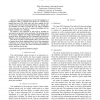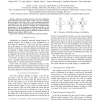HRI
2010
ACM
14 years 4 months ago
2010
ACM
— Assisting humans in their daily lives requires robots to be proficient in manual tasks and effective in communicating states/intentions with human users. This paper advocates ...
HRI
2010
ACM
14 years 5 months ago
2010
ACM
—Based on a study of the engagement process between humans, we have developed and implemented an initial computational model for recognizing engagement between a human and a huma...
HRI
2010
ACM
14 years 5 months ago
2010
ACM
—Alan Turing proposed a test for the intelligence of machines in 1950 [1]. Despite great efforts, no computer has passed this test so far. Each year, chat bots compete for the Lo...
HRI
2010
ACM
14 years 5 months ago
2010
ACM
—This research aims to enable robots to learn from human teachers. Motivated by human social learning, we believe that a transparent learning process can help guide the human tea...
HRI
2010
ACM
14 years 7 months ago
2010
ACM
—Humans constantly generate and solve ambiguities while interacting with each other in their every day activities. Hence, having a robot that is able to solve ambiguous situation...
HRI
2010
ACM
14 years 7 months ago
2010
ACM
—Managing user expectations of personal robots becomes particularly challenging when the end-user just wants to know what the robot can do, and neither understands nor cares abou...
HRI
2010
ACM
14 years 7 months ago
2010
ACM
HRI
2010
ACM
14 years 7 months ago
2010
ACM
—Natural human-robot interaction requires different and more robust models of language understanding (NLU) than non-embodied NLU systems. In particular, architectures are require...
HRI
2010
ACM
14 years 7 months ago
2010
ACM
—Reading gaze direction is important in human-robot interactions as it supports, among others, joint attention and non-linguistic interaction. While most previous work focuses on...
HRI
2010
ACM
14 years 7 months ago
2010
ACM
Abstract—Hala is a bilingual (Arabic and English) culturallysensitive robot receptionist located at Carnegie Mellon University in Qatar. We report results from Hala’s deploymen...




